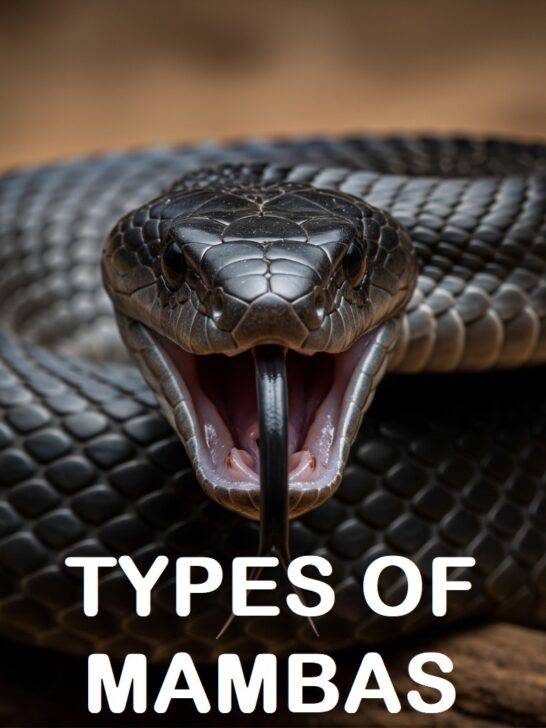Mambas are among the most fascinating and feared snakes on Earth, recognized for their agility, vibrant colors, and highly potent venom. Found primarily in sub-Saharan Africa, these snakes include several species, each with unique adaptations that enable them to thrive in their respective habitats. From the elusive Green Mamba to the dreaded Black Mamba, each type exhibits distinct behaviors, dietary preferences, and ecological roles. Let’s explore the different types of mambas and what makes them remarkable.
Post Contents
- Mamba Behavior: Swift and Elusive
- Mamba’s Endemic Habitats: Thriving in Diverse Landscapes
- Mamba’s Diet: The Predator’s Meal Plan
- Mamba’s Conservation Status: The Need for Awareness
- Exploring Mamba Varieties
Mamba Behavior: Swift and Elusive
Mambas are known for their incredible speed and agility, making them some of the fastest snakes in the world. They are primarily diurnal, meaning they are most active during the day, using their keen eyesight to hunt and navigate their environments. While they can be aggressive if threatened, mambas often prefer to avoid confrontation, using their impressive speed to escape potential threats. When cornered, they may display their hoods and hiss as a warning sign before striking or spitting venom to defend themselves.
Mamba’s Endemic Habitats: Thriving in Diverse Landscapes
Mambas inhabit a variety of environments, primarily found in tropical and subtropical regions of Africa. They prefer areas with dense vegetation, such as forests, savannas, and coastal regions, which provide ample cover and opportunities for hunting. Some species, like the Green Mamba, are arboreal and thrive in trees, while others, like the Black Mamba, may be found in open grasslands. Their diverse habitats reflect their adaptability and resourcefulness in finding suitable environments for survival.
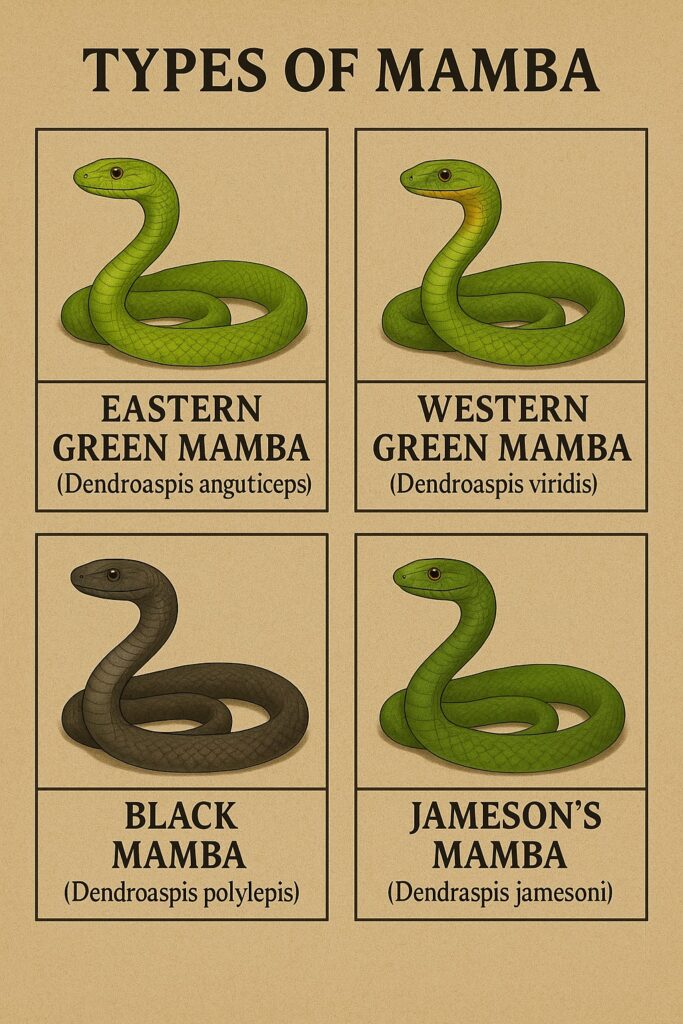
Mamba’s Diet: The Predator’s Meal Plan
Mambas are carnivorous and primarily feed on small mammals, birds, and reptiles. Their diet varies slightly depending on the species and available prey in their habitat. For instance, the Black Mamba often preys on rodents, while the Green Mamba may target birds and small mammals found near trees. Their venom plays a crucial role in subduing prey, allowing them to immobilize or kill it quickly. Despite their potent venom, mambas typically do not rely solely on venom for hunting; they also utilize their speed and stealth to ambush their food.
Mamba’s Conservation Status: The Need for Awareness
While many mamba species are classified as Least Concern, habitat loss and human encroachment pose significant threats to their populations. As these snakes play essential roles in controlling rodent populations and maintaining ecological balance, it is crucial to promote awareness and conservation efforts. Education about the importance of mambas and their habitats can help mitigate human-wildlife conflict and ensure that these remarkable snakes continue to thrive in the wild.
Exploring Mamba Varieties
1. Black Mamba aka (Blacktail Mamba) (Dendroaspis polylepis)
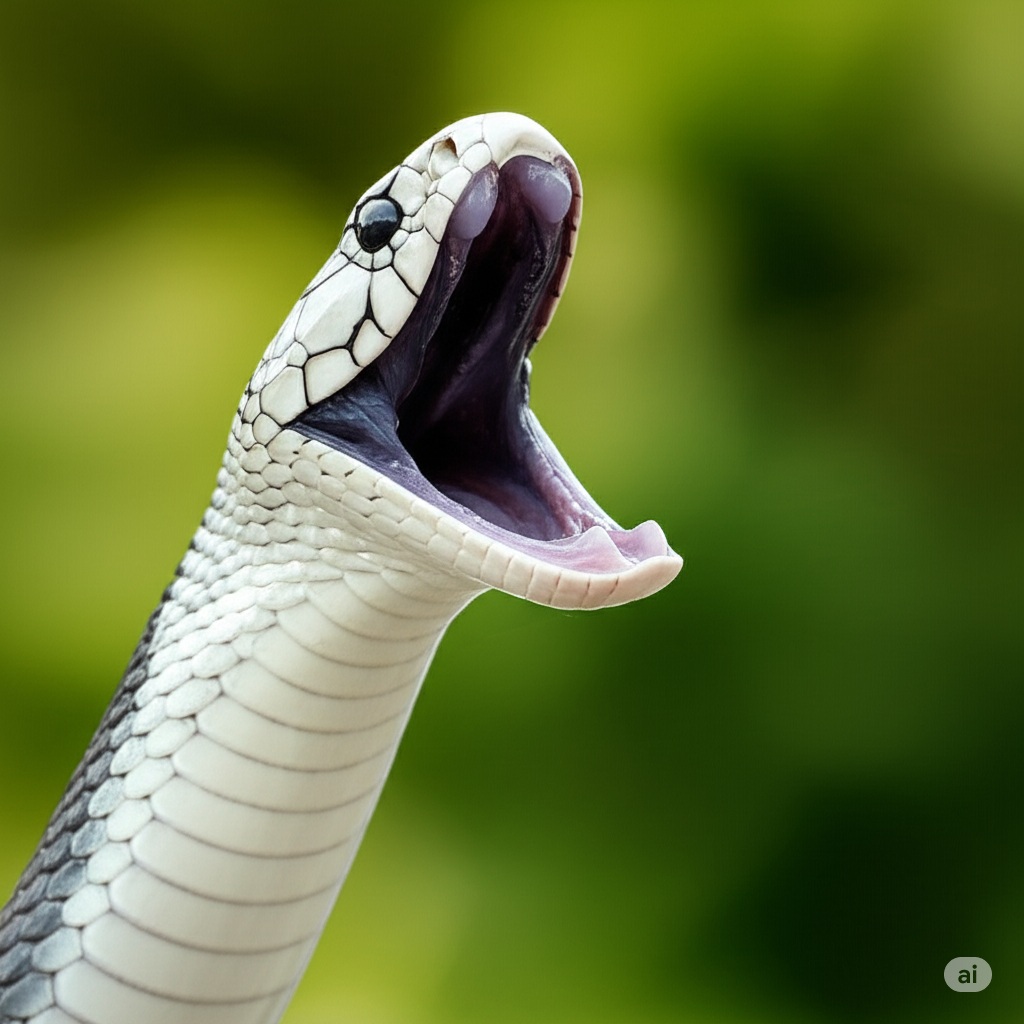
Classification
- Scientific name: Dendroaspis polylepis
- Class: Reptilia
- Domain: Eukaryota
- Family: Elapidae
- Kingdom: Animalia
- Subgenus: Dendroaspis
- Conservation status: Least Concern (IUCN)
Description
The Blacktail Mamba, commonly referred to as the Black Mamba, is one of the most well-known and feared snakes globally. It is characterized by its long, slender body, which can reach lengths of up to 3 meters (about 10 feet). The Black Mamba typically exhibits a coloration that ranges from olive to brown or gray, with a distinctive black interior in its mouth—hence the name “Black Mamba.” Its tail may appear darker than the rest of its body, further distinguishing it.
Lifespan
In the wild, Black Mambas typically live around 10 to 15 years, although some individuals may survive longer in captivity under optimal conditions.
Prey and Diet
The Black Mamba primarily feeds on small mammals, especially rodents, as well as birds. Its hunting strategy involves a quick strike and the use of its potent neurotoxic venom to immobilize prey. Once paralyzed, the prey is consumed whole.
Behavior/Venom
The Black Mamba is known for its agility and speed, making it one of the fastest snakes in the world. When threatened, it may display its characteristic hood and hiss loudly, preparing to defend itself. The venom of the Black Mamba is highly neurotoxic, causing paralysis and potentially death within hours if left untreated. Despite its fearsome reputation, it tends to avoid confrontation and will usually flee if given the opportunity.
Habitat
Black Mambas prefer dry, open habitats, including savannas, woodlands, and rocky hills. They are adept climbers and are often found in trees or bushes as well as on the ground.
Geographic Range
The Black Mamba is primarily found in southern and eastern Africa, with a range that extends from South Africa north to Kenya and into parts of West Africa. They inhabit a variety of environments, although they are typically associated with areas that offer adequate cover and nesting sites.
2.Green Mamba (Dendroaspis Angusticeps)
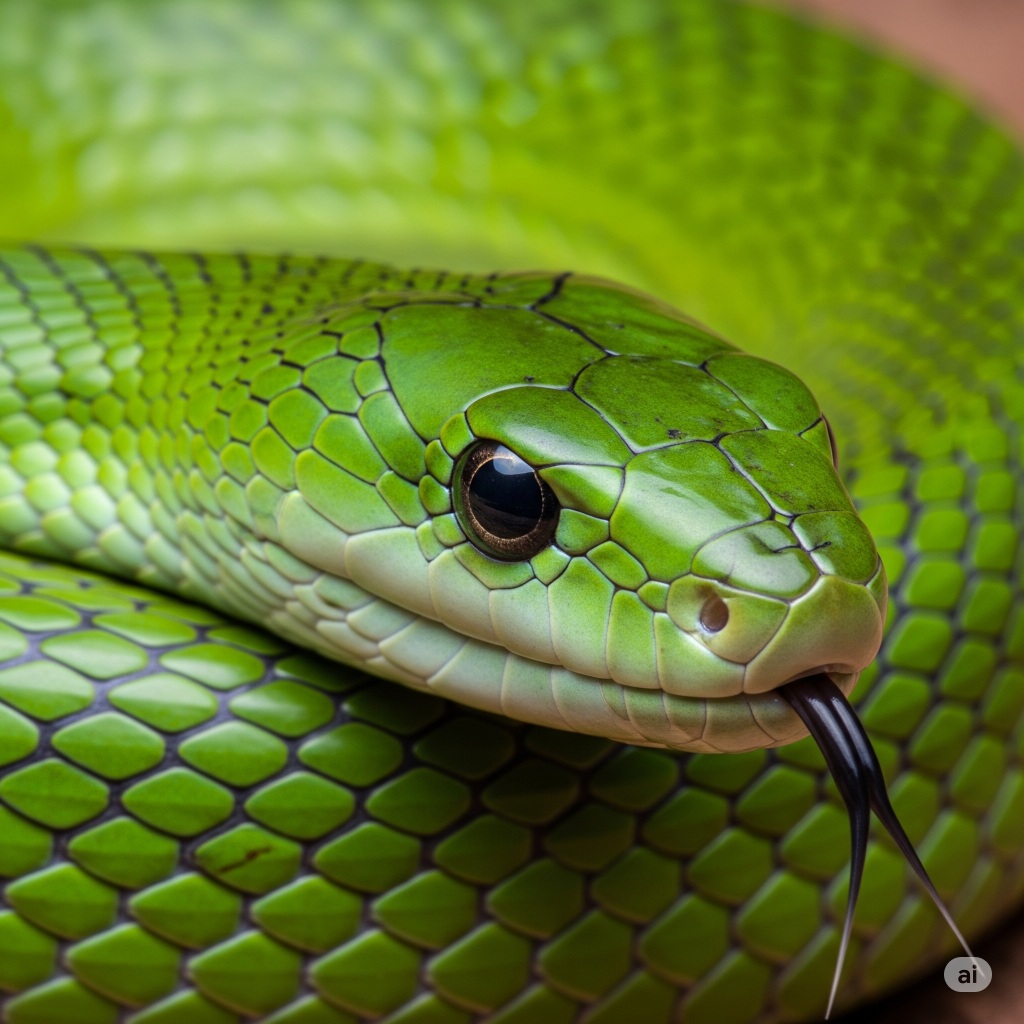
Classification
- Scientific name: Dendroaspis angusticeps
- Class: Reptilia
- Domain: Eukaryota
- Family: Elapidae
- Kingdom: Animalia
- Subgenus: Dendroaspis
- Conservation status: Least Concern (IUCN)
Description
The Green Mamba is a strikingly beautiful snake recognized for its vibrant green coloration, which allows it to blend seamlessly into its leafy arboreal habitat. It has a slender, elongated body and a distinct, narrow head. The scales are smooth and shiny, contributing to its agile appearance. This species is often confused with other green snakes, but the Green Mamba’s elegant build and unique coloration help differentiate it.
Lifespan
In the wild, Green Mambas typically live around 10 to 15 years; however, some individuals can live longer in captivity under proper care.
Prey and Diet
The Green Mamba primarily preys on small mammals and birds, utilizing its excellent climbing skills to hunt in trees. It uses its venom to subdue prey, striking quickly and accurately. The diet may include rodents and various small birds, reflecting its adaptability in different habitats.
Behavior/Venom
Green Mambas are known for their shy and reclusive behavior, often avoiding human contact. When threatened, they may display their hood and exhibit defensive postures, but they typically prefer to retreat into their vegetation. Their venom is potent and primarily neurotoxic, capable of causing serious health issues in humans if untreated. While bites are rare due to their secretive nature, they can lead to severe neurological effects.
Habitat
These snakes are predominantly arboreal, thriving in forested areas and dense vegetation. They prefer humid environments, such as coastal forests and rainforests, where they can easily blend into the foliage and hunt their prey.
Geographic Range
The Green Mamba is native to various regions in sub-Saharan Africa, including countries such as Kenya, Tanzania, Mozambique, and South Africa. Its range extends along the eastern coast of Africa, often inhabiting areas with abundant trees and vegetation.
3.Eastern Green Mamba (Dendroaspis Angusticeps)
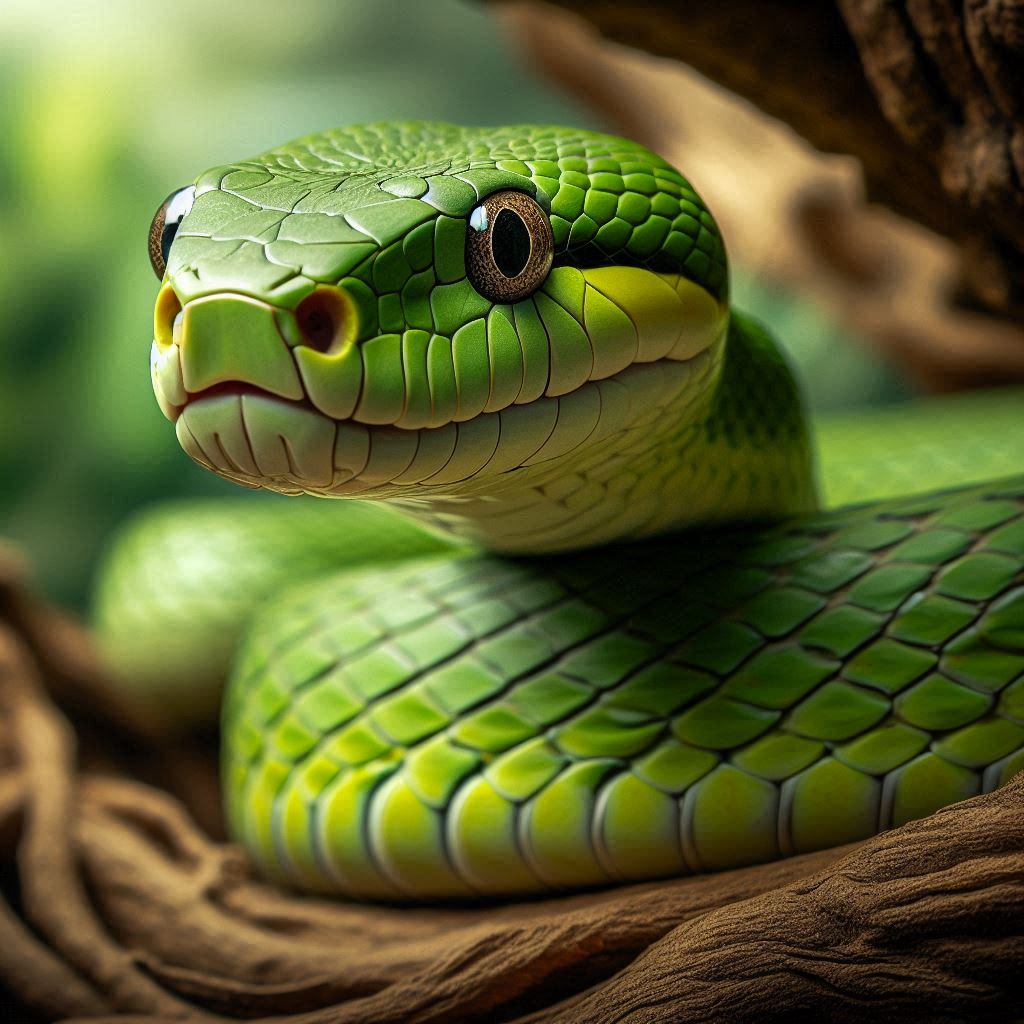
Classification
- Scientific name: Dendroaspis angusticeps
- Class: Reptilia
- Domain: Eukaryota
- Family: Elapidae
- Kingdom: Animalia
- Subgenus: Dendroaspis
- Conservation status: Least Concern (IUCN)
Description
The Eastern Green Mamba is known for its vibrant green coloration, which allows it to blend seamlessly into its leafy environments. It has a slender and elongated body, smooth scales, and a distinct, narrow head. Like other members of the mamba family, it possesses a well-defined hood that it can elevate when threatened, displaying its warning coloration.
Lifespan
In the wild, Eastern Green Mambas typically live around 10 to 15 years, although individuals in captivity can live longer under optimal care.
Prey and Diet
This snake primarily feeds on small rodents and birds, hunting in trees and shrubs. The Eastern Green Mamba uses its speed and stealth to ambush prey, relying on its venom to quickly incapacitate them.
Behavior/Venom
The Eastern Green Mamba is generally shy and prefers to avoid confrontation, often retreating into dense foliage when threatened. When it does defend itself, it may display its hood and strike. Its venom is highly neurotoxic, capable of causing paralysis and severe symptoms in humans if left untreated, although bites are relatively rare due to its elusive nature.
Habitat
The Eastern Green Mamba is arboreal, favoring humid, forested environments and coastal areas. It thrives in trees and shrubs where it can hide and hunt effectively, typically found in regions with dense tropical or subtropical vegetation.
Geographic Range
This species is predominantly found in the eastern coastal regions of Africa, including countries such as Kenya, Tanzania, and Mozambique. It inhabits areas close to water sources, such as rivers, swamps, and rainforests.
4. Western Green Mamba (Dendroaspis Viridis)
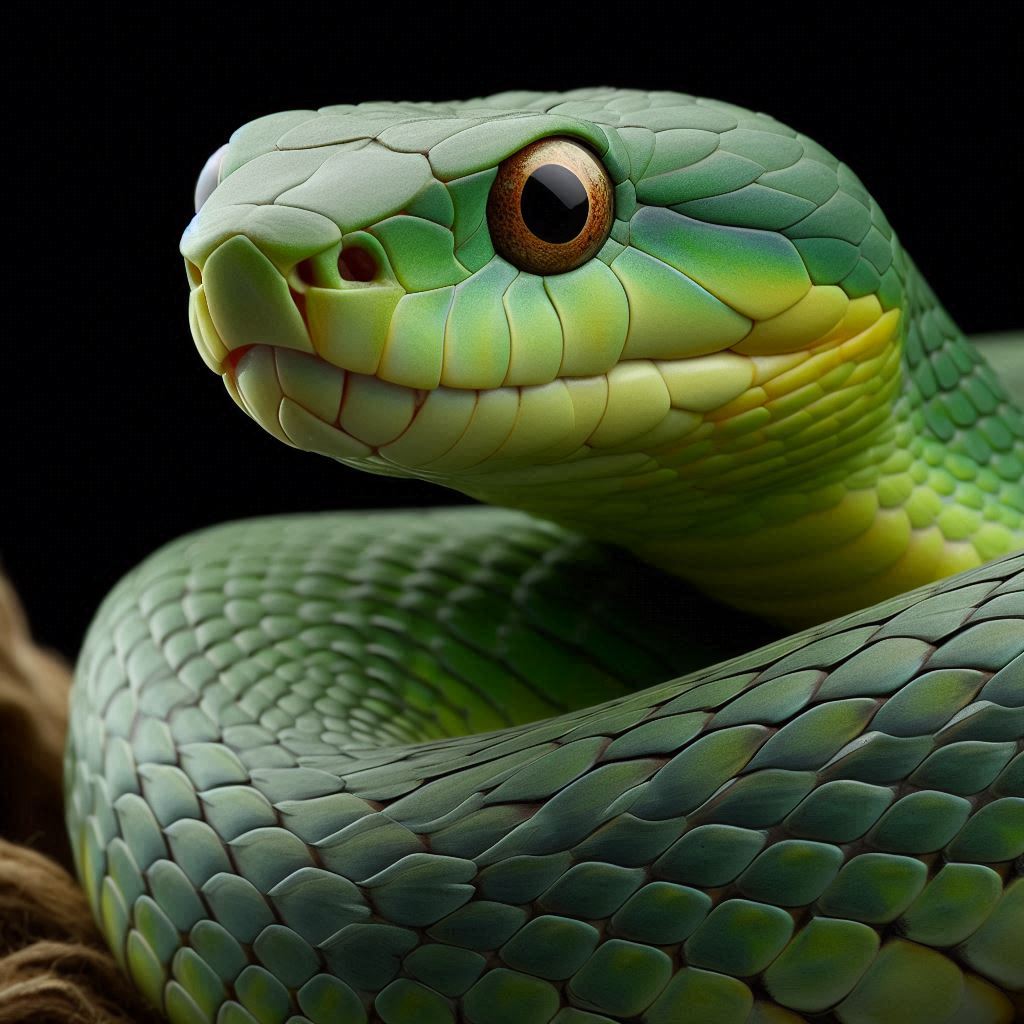
Classification
- Scientific name: Dendroaspis viridis
- Class: Reptilia
- Domain: Eukaryota
- Family: Elapidae
- Kingdom: Animalia
- Subgenus: Dendroaspis
- Conservation status: Least Concern (IUCN)
Description
The Western Green Mamba is a strikingly colorful snake, known for its vibrant green scales that help it blend into its natural arboreal environment. It has a slender and elongated body, smooth scales, and a narrow head that is characteristic of the mamba family. This species is slightly less aggressive compared to its eastern counterpart, although it is still capable of defending itself effectively.
Lifespan
In the wild, Western Green Mambas typically live around 10 to 15 years, while individuals in captivity can live longer with proper care.
Prey and Diet
The Western Green Mamba primarily preys on small mammals and birds. It uses its excellent climbing skills to hunt and ambush prey in trees and shrubs, striking quickly and injecting venom to subdue its catch.
Behavior/Venom
This species is generally shy and elusive, preferring to avoid human interaction. When threatened, it displays defensive behaviors, such as flattening its neck and hissing. Its venom, while primarily neurotoxic, can also be cytotoxic, causing significant pain and potential health issues if envenomation occurs. Bites, though rare, can lead to severe consequences without prompt medical treatment.
Habitat
The Western Green Mamba prefers humid, forested environments, thriving in coastal forests and tropical rainforests. It is an arboreal species, often found in trees and dense vegetation, where it can effectively hunt and stay hidden from predators.
Geographic Range
This species is primarily found in West Africa and is distributed across several countries, including Sierra Leone, Liberia, Côte d’Ivoire, Ghana, and Nigeria. It favors areas with abundant foliage close to water sources.
5.Jameson’s Mamba (Dendroaspis Jamesoni)
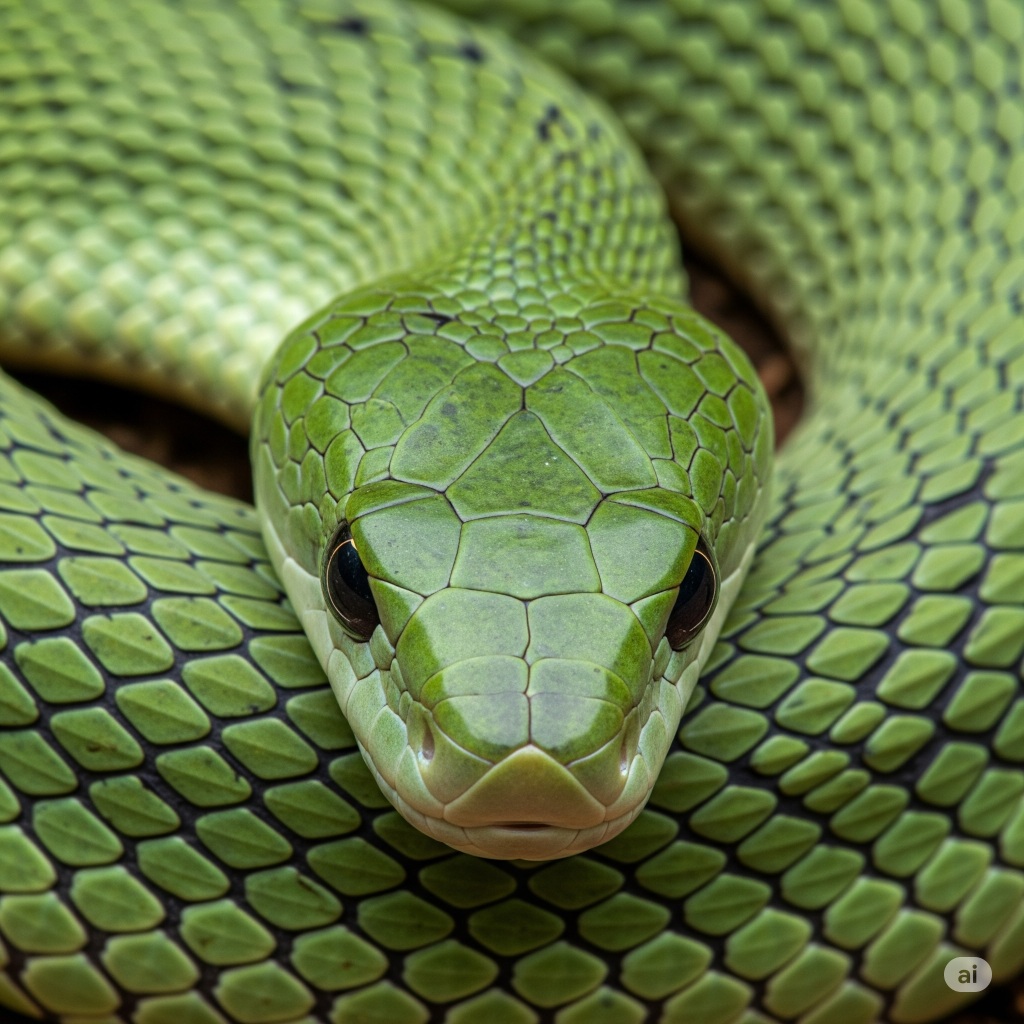
Classification
- Scientific name: Dendroaspis jamesoni
- Class: Reptilia
- Domain: Eukaryota
- Family: Elapidae
- Kingdom: Animalia
- Subgenus: Dendroaspis
- Conservation status: Least Concern (IUCN)
Description
Jameson’s Mamba is a strikingly beautiful snake characterized by its vibrant green or yellow-green coloration and slender build. It has smooth scales and a distinctive hood that it displays when threatened. This species typically measures about 1.5 to 2.2 meters (5 to 7.2 feet) in length, allowing it to move gracefully through its arboreal habitat.
Lifespan
In the wild, Jameson’s Mamba can live approximately 10 to 15 years, although individuals in captivity may live longer with proper care.
Prey and Diet
Jameson’s Mamba primarily feeds on small mammals, birds, and lizards. It is an adept climber, often hunting in trees where it can ambush its prey. Its speed and agility make it an effective predator in its environment.
Behavior/Venom
This species is generally shy and prefers to avoid human contact, but when threatened, it may exhibit defensive behaviors such as flattening its body and expanding its hood. Jameson’s Mamba possesses potent venom, which is primarily neurotoxic, affecting the nervous system and leading to paralysis or death if not treated promptly. Bites are rare due to its elusive nature, but they can be severe.
Habitat
Jameson’s Mamba thrives in humid, forested areas, typically found in tropical and subtropical rainforests. It prefers locations with plenty of trees and dense vegetation that provide cover and hunting opportunities.
Geographic Range
This species is primarily found in Central Africa, including countries such as the Democratic Republic of Congo, Uganda, Rwanda, and parts of Kenya. Its preference for forested habitats aligns with its distribution in these regions.
Conclusion
Mambas encapsulate the beauty and danger of the snake world, with their elegant forms and deadly venom. Understanding the different types of mambas, their behaviors, habitats, and diets enriches our appreciation for these fascinating reptiles. By promoting conservation efforts and raising awareness, we can help protect these extraordinary snakes and their ecosystems for future generations.

94% of pet owners say their animal pal makes them smile more than once a day. In 2007, I realized that I was made for saving Animals. My father is a Vet, and I think every pet deserves one. I started this blog, “InPetCare”, in 2019 with my father to enlighten a wider audience.
